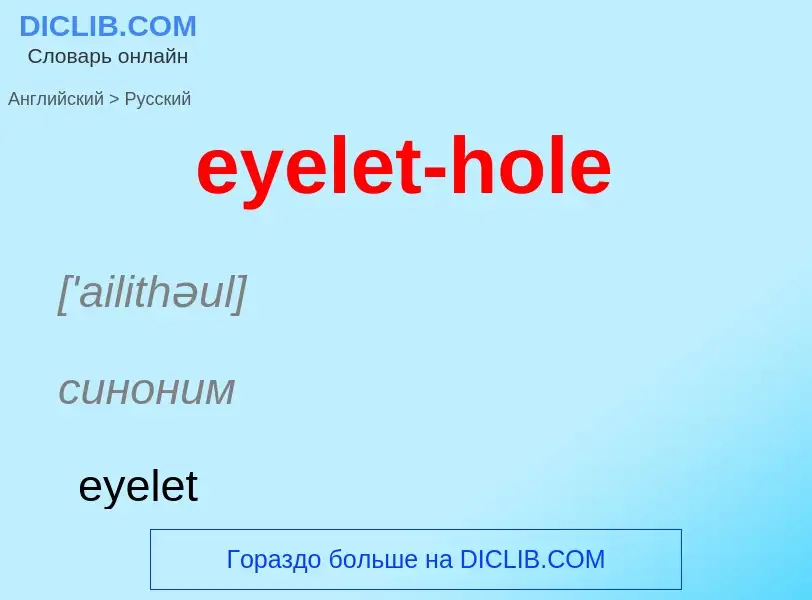Translation and analysis of words by artificial intelligence
On this page you can get a detailed analysis of a word or phrase, produced by the best artificial intelligence technology to date:
- how the word is used
- frequency of use
- it is used more often in oral or written speech
- word translation options
- usage examples (several phrases with translation)
- etymology
eyelet-hole - translation to English
['ailithəul]
синоним
общая лексика
дырочная электропроводность
дырочная проводимость
общая лексика
перфорировать отверстие
Wikipedia
In physics, chemistry, and electronic engineering, an electron hole (often simply called a hole) is a quasiparticle denoting the lack of an electron at a position where one could exist in an atom or atomic lattice. Since in a normal atom or crystal lattice the negative charge of the electrons is balanced by the positive charge of the atomic nuclei, the absence of an electron leaves a net positive charge at the hole's location.
Holes in a metal or semiconductor crystal lattice can move through the lattice as electrons can, and act similarly to positively-charged particles. They play an important role in the operation of semiconductor devices such as transistors, diodes and integrated circuits. If an electron is excited into a higher state it leaves a hole in its old state. This meaning is used in Auger electron spectroscopy (and other x-ray techniques), in computational chemistry, and to explain the low electron-electron scattering-rate in crystals (metals and semiconductors). Although they act like elementary particles, holes are rather quasiparticles; they are different from the positron, which is the antiparticle of the electron. (See also Dirac sea.)
In crystals, electronic band structure calculations lead to an effective mass for the electrons that is typically negative at the top of a band. The negative mass is an unintuitive concept, and in these situations, a more familiar picture is found by considering a positive charge with a positive mass.









![Binder]]-based and discbound [[loose leaf]] systems Binder]]-based and discbound [[loose leaf]] systems](https://commons.wikimedia.org/wiki/Special:FilePath/Binder-based and discbound loose leaf systems.jpg?width=200)



![chad]] collector chad]] collector](https://commons.wikimedia.org/wiki/Special:FilePath/Hole punch.jpg?width=200)

.jpg?width=200)

